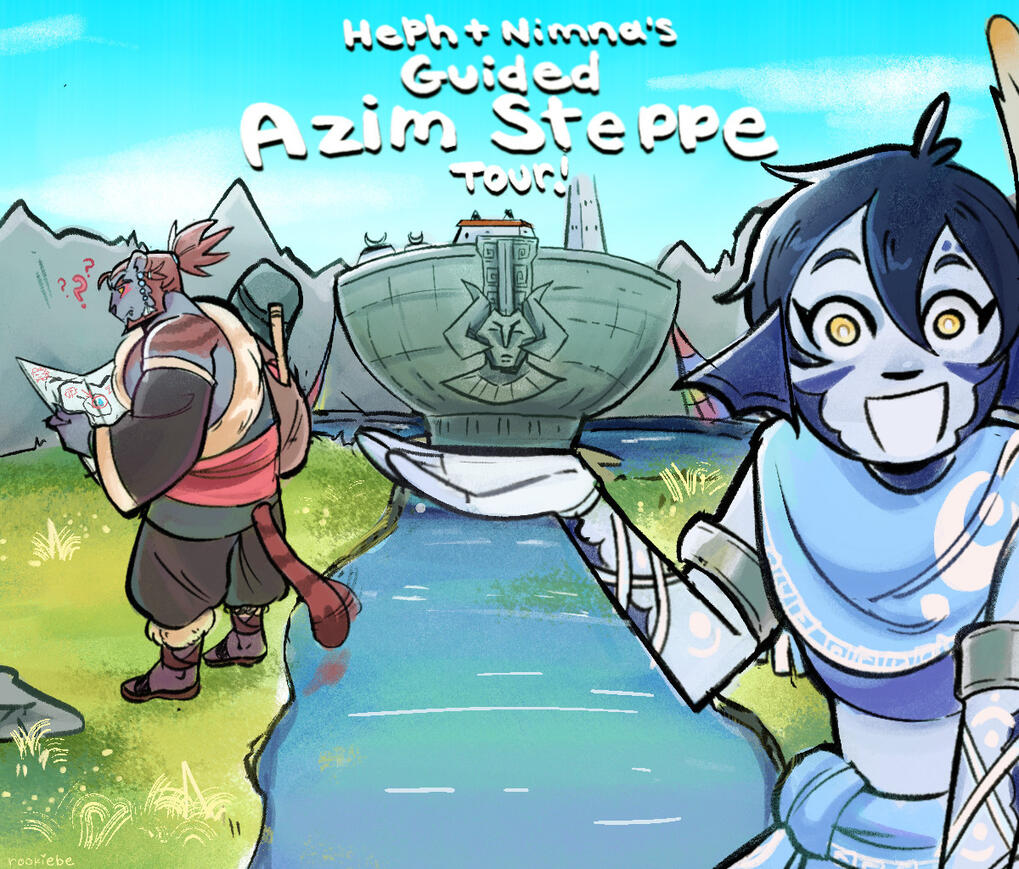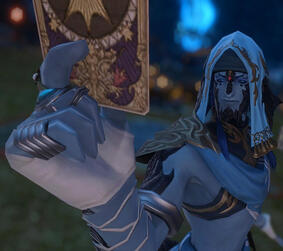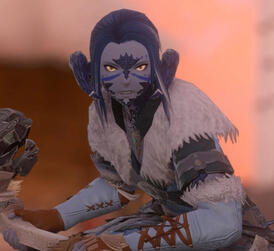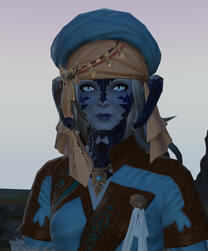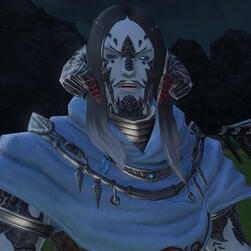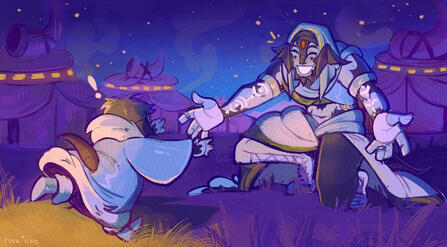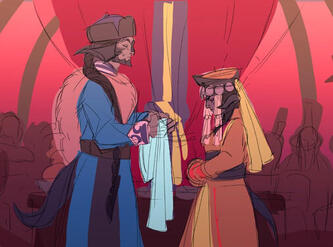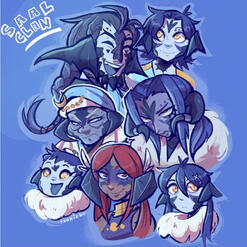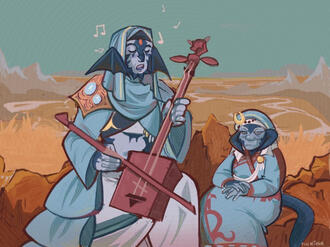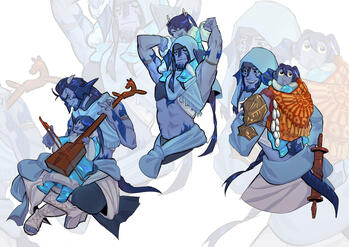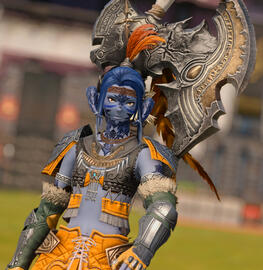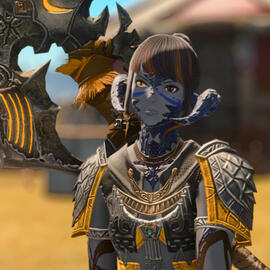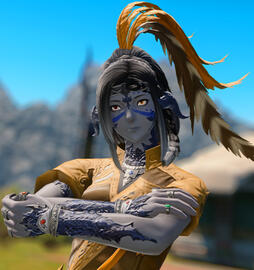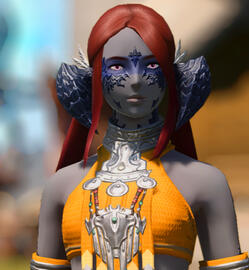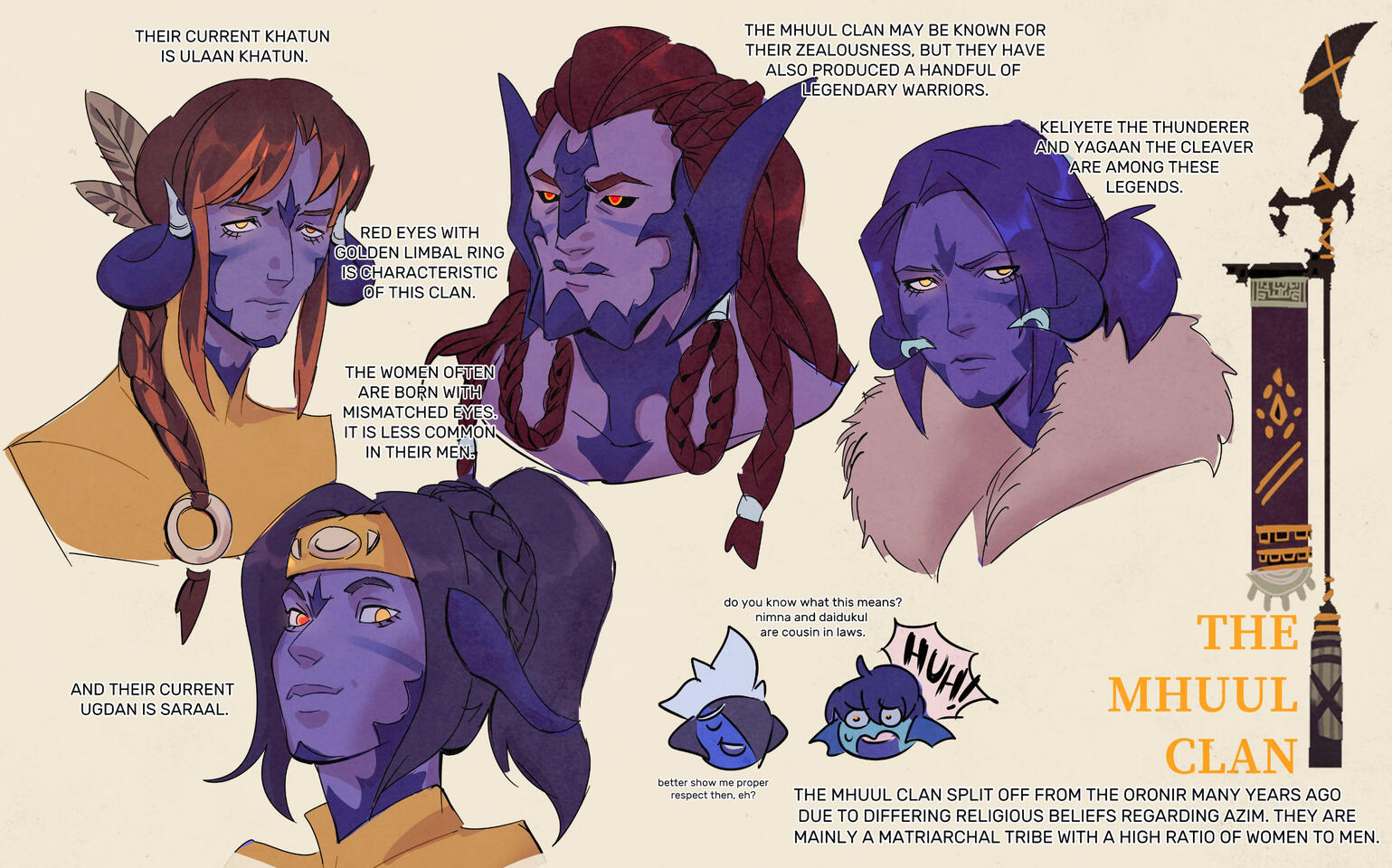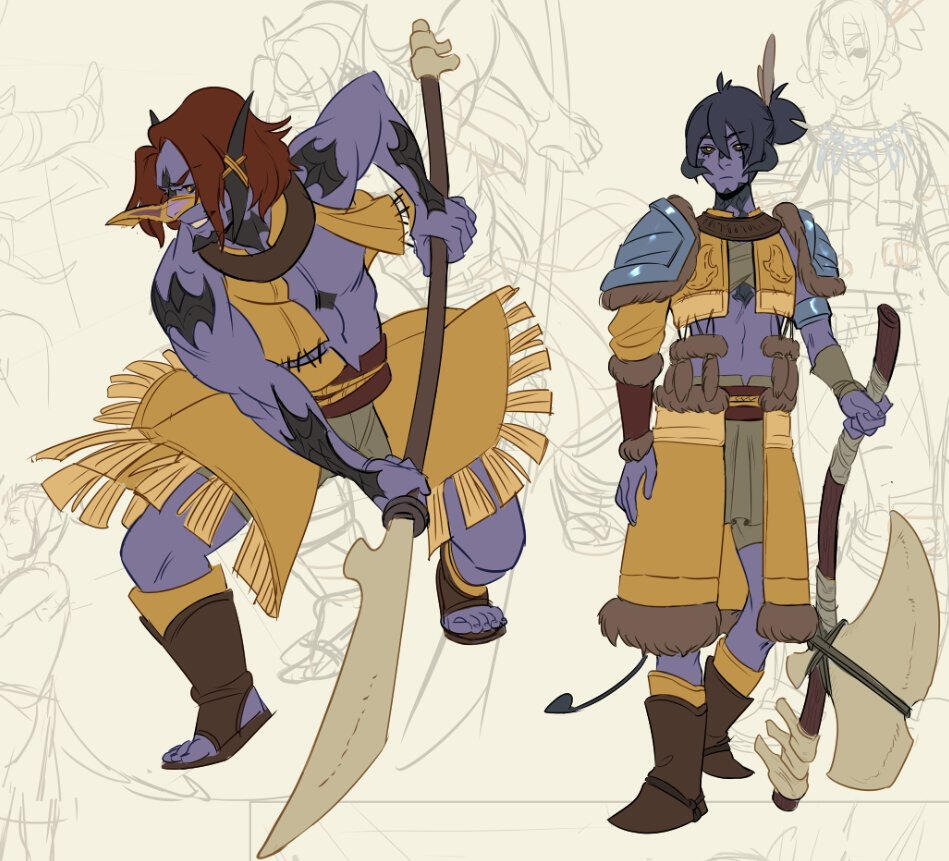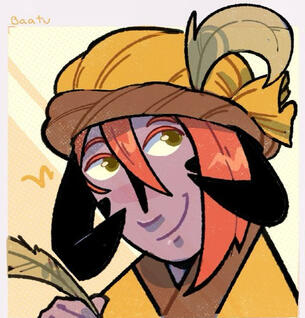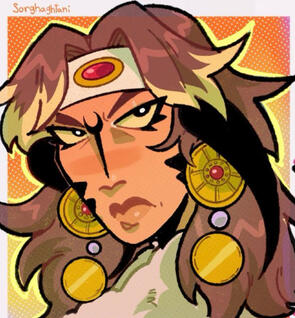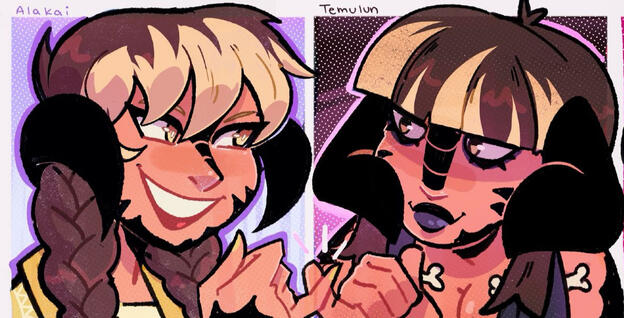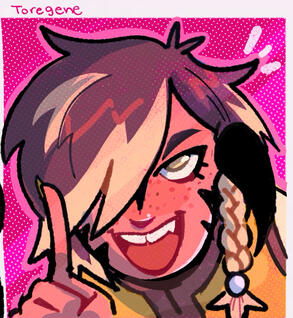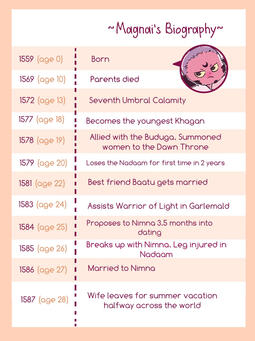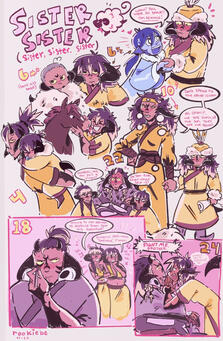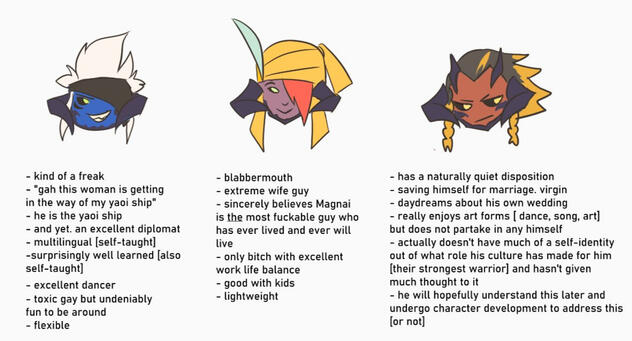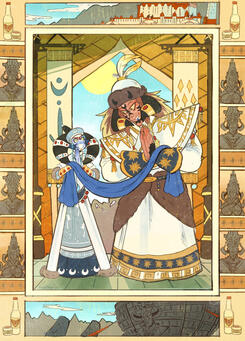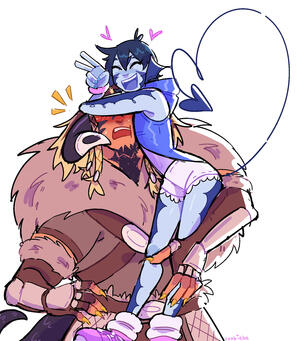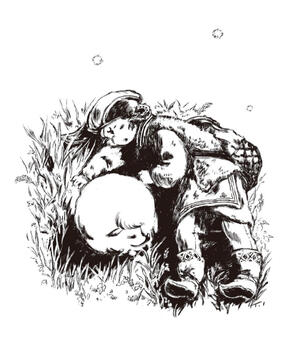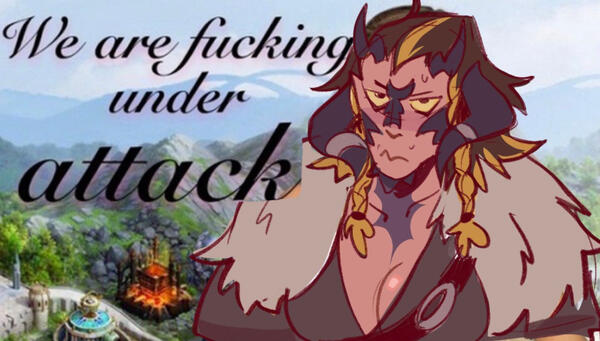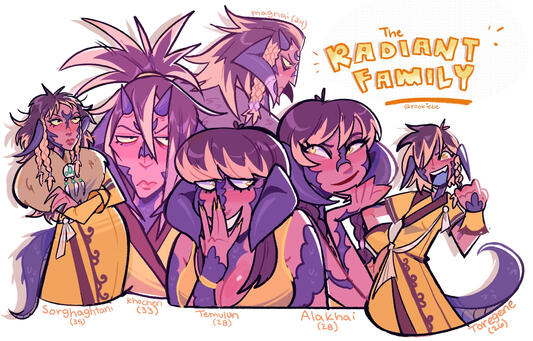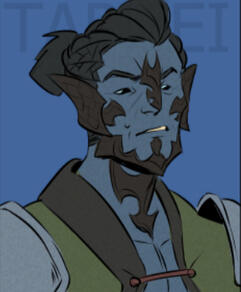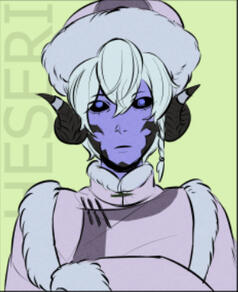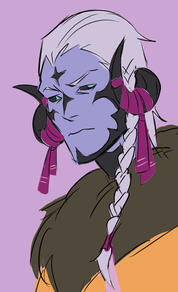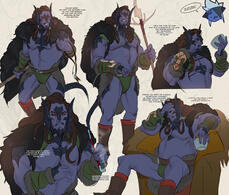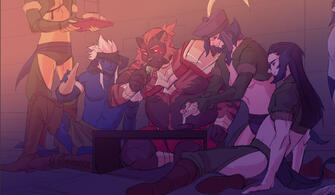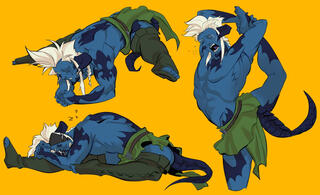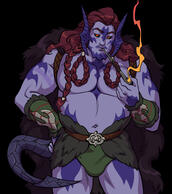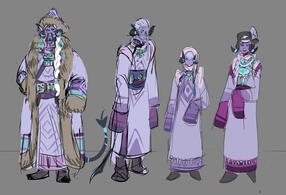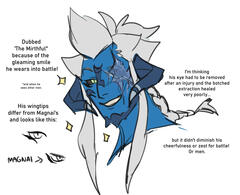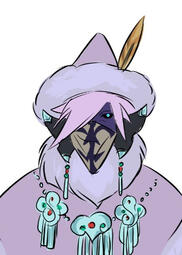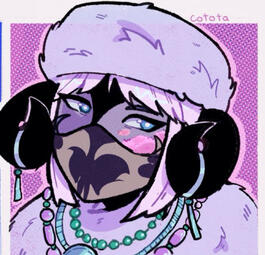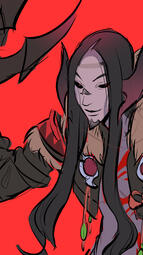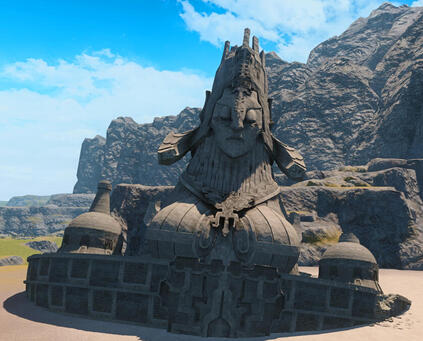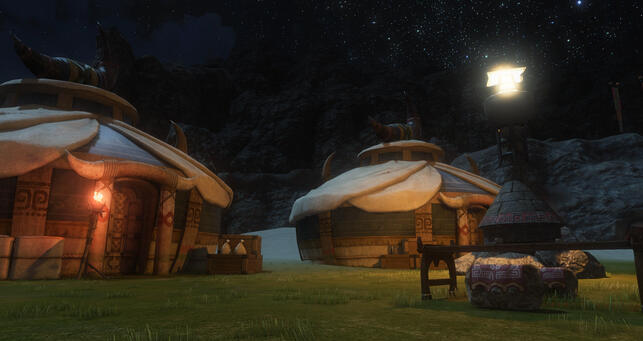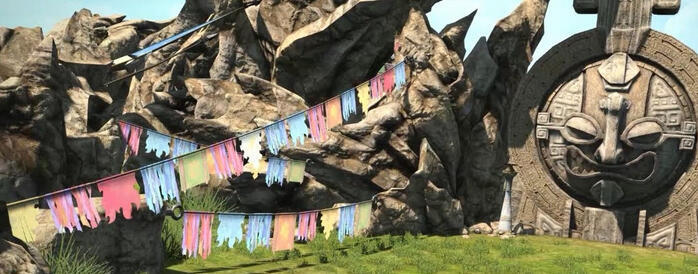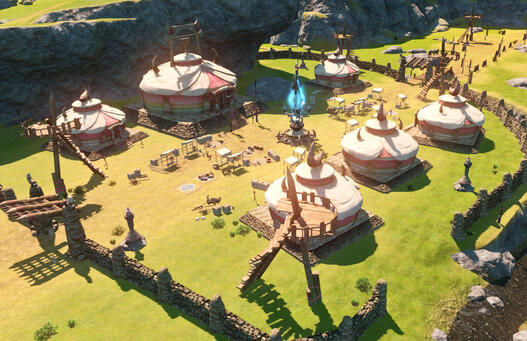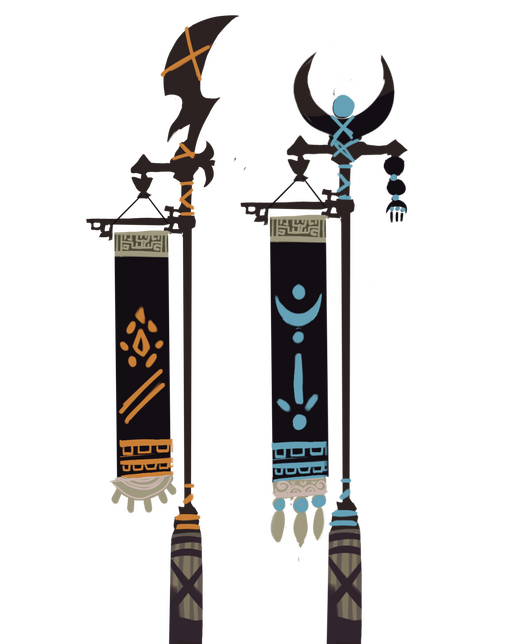
Our Azim Steppe
The Azim Steppe as it relates to the Warrior of Light, Nimna Saal.Re-imagining & expanding lore from the critically acclaimed MMORPG Final Fantasy XIV which has a free trial, and includes the entirety of A Realm Reborn AND the award-winning Stormblood expansion up to level 70 with no restrictions on playtime.Don't take it too seriously.
The Saal Clan
A nocturnal clan known for their expert cartography and embroidered textiles; the name aptly means "star".Once a peaceful clan of merchants and shepherds, their numbers dwindled after a string of raids from a neighboring tribe. To avoid further devestation, the Saal clan adapted by migrating at night and refraining from staying in one place for long. This lifestyle made them highly adept at navigating various terrains and climates and enabled them to excel in diplomacy during trade.Twice a year—once before Tsgaan Sar and once in the summer—their migratory patterns brought the Saal to Reunion, where they sold maps and various textile goods like swaddling blankets, deels, silks, and tugs. The Saal were renowned for their maps of the Steppe, which were limited in number and detailed safe migratory routes.Their attire featured blue and white cloth, and the clan was recognized by the sounds of the silver jewelry they wore. They valued turquoise stones as conduits for Nhaama and often donned decorative headdresses as status symbols. Moreover, udgans had an ancient ritual, passed down from parent to child, that granted them the ability of Starweaving. Through this rite, they could cast a spell of moonlit branches and stars to always guide them home.Tragically, the clan was decimated by a fast-moving plague epidemic, leaving only two known survivors. The Saal clan was buried according to Mol burial customs outside of Reunion.
Notable Members
NIMNA SAAL
The Warrior of Light's journey began ominously with her consuming her twin brother in the womb. In the Saal clan, twins are traditionally anointed as udgan and khan, but her parents welcomed only one healthy baby girl.
Saal children receive no name until surviving their first winter, leading to her endearing moniker, "Boogers," for her first year.BATU SAAL
Batu of the Silver Lining, father of the warrior of light, was a charming healer known for his songs and stories that captivated crowds in Reunion.
As udgan, he led religious ceremonies, charted stars, and healed both clan members and livestock.
During a year-long coming-of-age pilgrimage, he was forced to return prematurely to assume the role of khan following his father's tragic death. With his uncles vying for leadership, he was married to Yagaan Mhuul to support his claim to power. A year later, they celebrated the birth of their daughter, Nimna.FAYA SAAL
Faya, Batu's mother and Batuhan's wife, orchestrated the arrangement with the Mhuul clan to secure Batu's khanship. Now one of only two remaining members of the Saal clan, she serves as a retainer to her granddaughter.
A traditional and stern woman, Faya finds herself often disappointed in Nimna's unconventional personality. She possesses a surprising wit and spryness for her age, along with skills in embroidery and Starweaving
magic.BATUHAN SAAL
The former Khan of the Saal clan, and Nimna’s grandfather.
Ornery, miserly and disinterested in politics, he spent most of his time hunting and riding, and died during a raid when his horse got spooked and kicked him off, breaking his neck in the process.
The Mhuul Tribe
The name Mhuul translates to "holy mountains."This tribe is a splinter group of the Oronir, having separated from them years ago due to a schism of conflicting religious beliefs. Unlike the Oronir, the Mhuul view Nhaama as a deity of treachery and illusion, who coveted the power of the Sun. After seducing him in the form of a woman, she tore out Azim’s heart. Though wounded, Azim used his golden blood and shining flesh to create beings that would become the Mhuul, destined to hunt and defend against Nhaama's dark creations.As proof of their golden lineage, many Mhuul descendants, primarily women, possess the unique ability to summon lightning, a technique they call ‘Azim’s Wrath.’ The clan is notably skewed in gender, with women outnumbering men, who are often regarded as second-class citizens.Similar to their Oroniri counterparts, the Mhuul wear yellow to honor the Dawn Father. However, their dye is duller in pigment, and their attire often features more animal products, particularly feathers from birds they have hunted. Birds are considered sacred animals, as they use falcons for hunting, and yols serve as their primary means of transportation. Being close to the mountains, Mhuul warriors tend to be lean and skilled climbers.When warriors come of age, they receive facial tattoos applied with a chisel-like tool, administerd by the clan's udgan.
Notable Members
YAGAAN MHUUL
Known as Yagaan the Cleaver, she was a fierce warrior, a blunt speaker, and the mother of the Warrior of Light.
Her strained relationship with her eldest half-sister sister, Ulaan Khatun, often led to disputes over the leadership of the Mhuul clan. To ease these tensions, Ulaan arranged Yagaan's marriage to Batu Saal, after which she became the Khatun of the Saal clan.ULAAN KHATUN
Ulaan the Devout, is the stern and zealous khatun of the Mhuul clan. She embodies rigid ideals of righteous governance and the sacred rituals honoring Azim.
Her resolute demeanor commands both fear and respect, reflecting her unwavering commitment to the clan's spiritual prosperity.SARAAL UDGAN
Saraal is an empathetic soul committed to making a real difference in her tribe, but she is no pushover; her sarcasm and callousness challenge assumptions about those who take on the mantle of udgan, earning her the title "Sharp-Tongued Saraal."
Additionally, she has taken an oath of celibacy due to her role as udgan. She is Yagaan's younger half-sister.DELBEE MHUUL
Delbee the Gentle, was lauded for her beauty, sharp intellect, and signs of fertility. Her laid-back attitude, despite her challenging circumstances, caught the attention of Yagaan Mhuul, leading them to become close companions and later lovers.
Remarkably well-educated, Delbee was one of the few members of the Mhuul clan who knew how to read and write.
The Oronir Tribe
The name "Oronir" translates to "oro" (gold) and "nir" (warrior) in Old Auri. This tribe is identified by their brilliant yellow garments adorned with intricate embroidery, often featuring golden claws as a staple of their attire.Hailing from the abundant hunting grounds of the Sea of Blades, the Oronir are among the fiercest tribes of the Azim Steppe, boasting numerous skilled warriors and talented hunters. Leadership within the tribe is determined not by bloodline or heritage, but through the Azim Bokh—a wrestling match where the strongest is declared the most "radiant" and becomes the khan.They believe it is their solemn duty to protect the Xaela and view themselves as direct descendants of Azim, considering their tribe to be superior to all others—though other tribes are wont to agree. Despite their pompous and arrogant attitude, the Oronir genuinely care for the well-being of all who reside in the Steppe.The Oronir are extremely devout in their faith to Azim, as well as being deeply invested in the Azim/Nhaama mythos, advocating staunchly for monogamy, viewing divorce or multiple partners as taboo within the tribe.
Notable Members
MAGNAI ORONIR
Magnai the Older, khan of the Oronir tribe and khagan of the Steppe, is a towering figure known for his aloof and haughty demeanor. He began his reign at just 18 years old, making him one of the Steppe's youngest khagans, and has since won the Naadam countless times.
From boyhood, his freakish size and strength set him apart from his peers, a trait he brought with him in adulthood, but despite his intimidating stature he tends to be rather soft-spoken. Magnai frequently finds himself beholden to the chores and whims of his five older sisters.
Shaped by the harsh traditions of the Steppe, Magnai is stubborn and often uncompromising. He embodies the paradox of being both lion-hearted and tender: a warrior who fights for glory while (not so) secretly yearning for a love that matches the intensity of his spirit.BAATU ORONIR
Magnai’s closest friend and right-hand man serves as the tribe's bookkeeper, diplomat and event coordinator.
He is the Most Radiant's number one hype man and is happily married; the only thing he loves more than his work with Magnai is spending time at home with his wife and child, Bolormaa and Mylo.
After the events of the Stormblood Naadam, Baatu walks around with the assistance of a cane.SORGHAGHTANI ORONIR
Magnai's eldest sister is a regal, keen-eyed woman who fearlessly speaks her mind. After the death of their parents, she took on the responsibility of raising her siblings. As vice regent, she plays a crucial role in assisting her brother with decision-making and, at times, can make unilateral decisions without objection from the khan.
In her youth, she had a passionate love affair with Iturgen of the Questir, resulting in the birth of her daughter Nergui, a secret she has kept from him for years. Sorga is highly respected among the Oronir.KOCHEN ORONIR
The second oldest sister, and was once the closest to Magnai. Cynical, snarky, and world-weary, she was banished from the Oronir by Magnai, swayed by Sorga, for being in a relationship with a married woman.
Now, she resides with her partner, Cotota, in the Qestir tribe, where she helps raise her son.TEMULUN & ALAKAI ORONIR
The third oldest sisters, are twins and cause Magnai the most grief, constantly teasing him and playing pranks.Temulun is the tribe's death udgan, known for her distinctive dark and revealing attire. She is married to Charakha, the clan's poison expert, and together they have five children. Poised, deadpan, and well-mannered, she also has a surprising warmth underneath her morbid personality.Alakai is more shameless than her twin and refuses to settle down, much to the chagrin of their oldest sister. She has slept with nearly every eligible person in the tribe at least once, and didn't plan to stop anytime soon. That is until a mysterious Raen named Riku entered her life. Alakai is exceptionally snobby, high maintenance, and often takes little seriously.TOREGENE ORONIR
As the youngest of the sisters, she is determined to prove her independence and step out of her siblings' shadows. Fiercely enthusiastic, direct and belligerent, she is skillful at taunting and insulting her younger brother. She shows no interest in seeking love of any kind.
The Buduga & Aizhen Clan
The Buduga
An all-male warrior tribe that replenishes its ranks through kidnapping and tribute. With their tribe name meaning "basin dweller", it is no wonder they are adept at fishing and hunting game unique to the base of the Tail Mountains.Unwavering loyalty is a trait prized by these warriors, which is admired even by allied tribes, for such arrangements are key to their survival.They tend to wear scantily clad, form-fitting clothing to best accentuate and display the male form. These clothes reflect the colors of the mossy rocks on which they reside.The Aizhen
A clan of incense makers and spice peddlers, known as the Aizhen which translates to "Beloved of the Lady". They formed alliances with various tribes across the Steppe, often by marrying off their scions.They possess a secret method of communication through their weaving patterns and incense notes. Once a large and prosperous clan, they are now believed to be defunct following their destruction by the Buduga.Famed for their horn adornments, often crafted from silver, turquoise, carnelian, or jade, these pieces symbolize a status of wealth
Notable Members
DAIDUKUL KHAN
Daidukul the Mirthful, Keliyete's favorite husband, was appointed as the new khan of the Buduga following the old khan's mysterious death.
He is admired for his indomitable will and sincere devotion to his tribe's well-being. He maintains a cheerful and charming demeanor, but beneath his brilliant smile lies a shrewd strategist who forgives but does not forget.
He has entered a contentious pact with the Oronir, pledging Buduga warriors in exchange for a share of the spoils, particularly the right to select male tributes. This decision has stirred debate among both Oronir and Buduga traditionalists.
Daidukul's interest in Hephaestion VI deepens with the return of Nimna Saal for an extended stay at the Dawn Throne.KELIYETE BUDUGA
Keliyete the Thunderer was the previous khan of the Buduga Clan, who abducted Daidukul in his youth.
Originally hailing from the Mhuul Clan, he joined the Buduga voluntarily, where he quickly usurped the title of khan due to his fierce enthusiasm for battle. Whilst he won the Naadam for the Buduga, his dislike for politics, disillusionment with stationary life and influx of tributes lead to their catastrophic downfall, and eventual banishment from the Dawn Throne before his reign ended.
He died under mysterious circumstances, alone in his ger.TARGEI BUDUGA
Also known as Targei Bleeding Heart, the leader of the Khan’s keshig is proud to hold a position that reflects his deep reverence for Keliyete Khan. He is sworn to defend Keliyete's beloved spouse and successor, Daidukul. Strong, traditional, and an honorable warrior, he embodies the original Buduga values of ancient times.HESERI AIZHEN
Keliyete’s second husband. Heseri’s marriage to Keliyete Khan was a carefully orchestrated alliance between the Aizhen and the Buduga, brokered by his father. Raised to be the perfect consort, his clan faced annihilation after their treachery was exposed, leaving Heseri and a few scattered remnants as the only survivors.TAMASHIRIN AIZHEN
Hailing from the now-defunct Aizhen tribe, Tamar is Hersei's eldest brother. His arranged marriage to Lady Sorghaghtani aimed to forge a strong alliance between the Aizhen and the Oronir. A dutiful yet cold and taciturn man, he resents his brother, viewing him as the reason for the Aizhen tribe's extinction. The pink ribbons on his horns are a symbol of mourning.
Other Notable Characters
ITURGEN KHAN
Iturgen, khan of the Qestir, is the respected founder of Reunion. Once known as the guardian of crumbling walls, now manages the markets of Reunion with a steely, shrewd eye. In his youth, he was called Iturgen of a Thousand Arms, a fearsome warrior skilled with any weapon. However, he has since chosen a life of peace.
After the death of his favorite sister, he raised her daughter, his niece Cotota, from birth.
Many years ago, he fell in love with Lady Sorghaghtani of the Oronir and wished to marry her, but her duty compelled her to wed another man. On the day they were to part ways, they were entangled in one last love affair, resulting in the birth of Sorga's only daughter, who is now raised by her husband.COTOTA QESTIR
As the niece of Iturgen Khan, she is responsible for deciding which merchants are allowed to sell their wares in Reunion. Although she is technically still married to a man from another tribe, Iturgen brought her back after learning of his violent behavior toward her. She has since fallen in love with a large and awkward girl from the Oronir, who is unconcerned about her previous relationship. Together with Kochen, they raise her two year old son. Practical and canny, she excels in matters of business.RIKU OBINATA
Riku was born into the noble Obinata clan, which despite its modest size, has always been on the fringes of Doman nobility, particularly post-Stormblood. To sustain their economic power and social influence, the clan entered the controversial brothel business.
Riku was dispatched to broker a deal with Magnai Khagan in his court, aimed at expanding business into the Azim Steppe following a failed attempt with Iturgen Qestir.
Riku has long been treated as the "Black Sheep" of the family due to their mixed Yanxian and Doman heritage; they walk a fine line between duty and independence, guided by a personal code of honor that is flexible, but never abandoned. Regardless of official recognition as a samurai in the traditional sense, Riku's skills precede them, outmaneuvering opponents easily in both negotiation and combat.MOGAI ARULAQ
Mogai is of the Arulaq, a tribe believed to have been lost for over 200 years.
A sadistic warmonger of thirty-four summers, he believes that only the truly exceptional can propel the Steppe beyond its stagnation; he seeks to advise a khan capable of uniting the warring tribes of the Steppe under one banner. Valuing greatness highly, he is frequently dismayed and angered when exceptional khans are hindered by matters of the heart.
Despite his questionable delusions, Mogai possesses a strong charisma and intelligence, twisting his ambition, discipline, and focus into something truly warped.
Codex
KHAN
A title given to the tribe ruler.KHATUN
The female variant of khan.KHAGAN
Translates directly to "great/supreme ruler", this title is granted to the winner of the Naadam ceremonial battle.UDGAN
A shaman or shamaness. This member of the tribe is responsible for leading religious ceremonies, healing, and communing with spiritual ancestors.IILOH
A settlement or camp. ie "Mol Iloh, Saal Iloh"KHAA/KHAT
An oasis or a river.AZIM
Also known as the Dawn Father, he is the sun deity and it is believed that it is his light and blessing that allows the grass to grow that feeds the Auri herds.NHAAMA
The Dusk Mother embodies love, but so too does she embody war. She is the moon deity and it is believed that it is her voice that carries the wind through the grasslands.NAADAM
An annual ritual combat gathers the Xaela tribes to determine the next Khagan. The location of the Naadam is revealed the day of at sunrise and warriors arrive on Yol mounts, which are obtained from Baradam's mettle.
The tribes battle for the ovoo and the victor's tribe will rule the Steppe for the following year. Participation in the Naadam is not mandatory.BARDAM'S METTLE
Those who would participate in the Naadam are put to trial in the footsteps of a great Xaela hero of eld called Bardam, whose gauntlet is a series of tests of strength and agility called “Bardam’s Mettle”. Only those who survive it are fit to be considered Warriors of the Steppe, and this is widely considered a rite of passage in many Xaela tribes. It is customary for warriors passing through Bardam's Mettle to hang their tribe's tug, leaving the area decorated in many colorful cloths from countless hopefuls testing their mettle.KURULTAI
The annual meeting before Tsagaan Sar, known as the great gathering of khans, occurs at the Dawn Throne, a neutral ground for tribes to feast, converse, and forge alliances. Significant news, concerns, and clan disputes are shared, addressed by the khans and the Khagan. Newly appointed khans are encouraged to present themselves as a gesture of respect.
This gathering, while politically significant, also celebrates the end of the current Khagan’s reign and blesses the next Naadam.
Rarely, the ruling Khagan may convene an emergency kurultai to address threats to the Steppe, such as invasions.
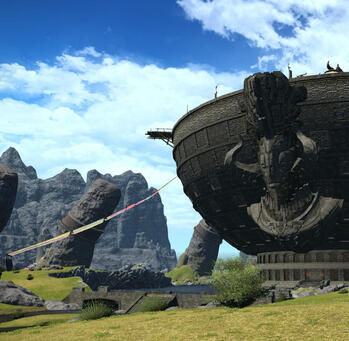
THE DAWN THRONE: A monument at the sacred site where Azim formed his corporeal embodiment as the Dawn Father, atop the Azim Khaat. Those who win the Naadam move in here during their reign.

THE DUSK THRONE: A monument at the sacred site where Nhaama manifested her corporeal form as the Dusk Mother. Located at the northeast edge of the Nhaama Desert, it is being swallowed by the sands of time.

GER/YURT: A circular tent of felt or skins on a collapsible framework.

TUG: A flag reflecting the tribe of origin's color. Warriors will often hang these flags around places of import in the Steppe. Also known as a prayer flag.

REUNION: The hub of trade founded by the Qestir. Nowadays, in addition to all the peoples of the Steppe, merchants from foreign lands may trade here. Violence is strictly forbidden.

PATH OF THE CRAVEN: The bridge over the Wound remains unrepaired since its collapse. Once a test for Steppe warriors, it required the courage to tame and ride a yol. The Mhuul accuse the Oronir of sabotaging the bridge to this day.
Steppe Culture
THE ETERNAL WAR OF DUSK & DAWN
Many Xaela believe the deities Azim and Nhamaa were gods who transformed the world into a battlefield and the Au Ra into their warriors. Azim, known as the "Dawn Father," created the Sun, from which the light-scaled Raen is said to have originated. In contrast, Nhamaa earned the title "Dusk Mother" for her creation of the Moon, giving rise to the dark-scaled Xaela. Their creations—Sun and Moon—are believed to hold the very fabric of the world together. If Azim and Nhamaa were to reunite, whether for love or war, it would bring about the world's end.ELDER GODS
Some Xaela tribes, rather than following Azim and Nhamaa, heed the whispers of the Elder Gods, whom they believe guide their daily lives. These gods may issue commands deemed absolute.TSAGAAN SAR
A week of revelry marks the celebration of the first full moon of the year, as various tribes gather to trade, celebrate, and prepare for the Naadam.
During this time, mingling is encouraged, and conflict is strictly forbidden. It seems fitting that this week of peace and festivity precedes the Naadam, a time when lives are often lost.CULINARY & HUNTING HABITS
The Xaela are a resourceful people who respect nature and make use of every part of an animal after a hunt. Most Steppe Xaela begin training to ride and shoot a bow from a very young age, making them proficient hunters.
While hunting traditions and game vary between tribes, dzo and sheep are staples across the Steppe. Typically, Xaela hunt in small groups, consisting of one chaser and multiple hunters. The chaser goes down the mountain to scout for animals, while the hunters lie in wait for the prey to come into position.
A hunting expedition usually lasts several days, but rarely exceeds a week.GARLEMALD'S ATTEMPTED EXPANSION
Garlemald’s southern expansion into Othard put them directly on the path to encountering several tribes in the Steppe, sparking a conflict that would last for many years.HORSES
The Xaela share deep bonds with their horses due to it being the primary mode of transportation for these nomads. They are also prized for the advantages they offer in warfare.
The harsh weather and half-wild life of the Steppe horse boost their strength and stamina. They can carry a rider for 65 to 80 malms in a day and can gallop with a rider for 30 malms without slowing down.YOL
Native to Othard’s Tail Mountains, these carnivorous cloudkin possess an uncanny ability to manipulate wind-aspected aether, which grants them increased speed and strength. Their wings can unleash a concentrated blast of gale force, capable of upending a target before the yol even gets close. As such, only skilled warriors and wealthy tribes employ the use of yols.PIPE SMOKING
Popular recreational and social activity. It is customary to offer your pipe to visitors, and if in a group, to pass it around.
It’s most often a sign of status and affluence, as an ornate pipe is quite the luxury, and is mostly practiced among male adults.HORN ADORNMENT
Only the highest-ranking Xaela have rings on their horns, namely, khans and khatuns, as it is a display of wealth and/or power.
Some udgans will similarly adorn their horns, but this practice is believed to hold spiritual significance.FILIAL PIETY
Steppe society is generally a society that practices filial piety, where there is great reverence for one’s parents, elders, and ancestors.
Despite tribes having a single authority figure in khan or khatun, it is common for them to be advised by a group of that tribe’s elders.
When inviting people into your ger, it is customary to greet each guest based on age, where a younger person’s arms are placed under an elder person’s and grasp their elbows to show support for their elder.
During mealtimes, it is also customary to offer food to the eldest present first, and not eat until the elders have taken their first bite.FERTILITY
In the Steppe, large families are highly revered, with the expectation that nearly every couple will bear at least one child.
Twins are more commonly born in the Steppe, attributed to the blessings of the Dawn Father and Dusk Mother. Fraternal twins—a boy and a girl—are seen as the ultimate sign of favor.
